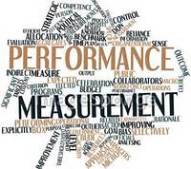The roadblocks to measuring diversity and inclusion no longer exist. It is possible to evaluate so-called soft projects with a well-defined diversity ROI process and methodology.
 There has been a shift from faith-based to fact-based investing. Soft functions such as a leadership development, employee engagement or diverse work team programs are often assumed to be making a difference. This suggests it would be difficult to measure and place a monetary value on the project, and more difficult to connect the particular initiative to a business impact measure.
There has been a shift from faith-based to fact-based investing. Soft functions such as a leadership development, employee engagement or diverse work team programs are often assumed to be making a difference. This suggests it would be difficult to measure and place a monetary value on the project, and more difficult to connect the particular initiative to a business impact measure.
Things have changed. These roadblocks no longer exist, and it is possible to evaluate so-called soft projects credibly with a well-defined diversity return on investment process and methodology. Executives want to see their organization engage in fact-based investing and show the monetary value of that investment with credible data.
For example, a study conducted by Chief Learning Officer magazine’s Business Intelligence Board involving 335 chief learning officers. It reveals interesting results describing the current and future use of ROI. According to the “2015 Measurement and Metrics” study, 36 percent of the CLOs use business impact data to show the impact of the training organization on the broader enterprise; 22 percent of the CLOs use ROI data for the same purpose.
Some 23 percent plan to implement ROI in the next 12 months, and 10 percent plan to implement it in the next 12- to 24-month time frame. Also, 17 percent plan to implement it with no particular time frame. This means almost 50 percent of the CLOs plan to implement ROI in the future. When that number is added to the current use, this suggests that 71 percent of CLOs are either using or plan to use ROI in the future. Diversity and inclusion leaders would be wise to make similar plans.
The study also revealed a desire to see the value of projects and programs before they’re implemented. Before the recession, this was not so much of a concern. However, since the recession, this is a typical request, particularly if the investment is large. If you are building a $4 million wellness and fitness center, you need to show the ROI in advance. If you plan to implement a $5 million diversity leadership development program, you might have to show the diversity ROI in advance. Forecasting in advance is important, allowing everyone to consider how the project works and how it delivers results.
Companies often struggle to evaluate whether their diversity and inclusion initiatives meet business needs and if they are worthwhile investments. Knowing how to construct and use diversity ROI-based metrics and predictive analytics is a mandatory skill and competency that all diversity and inclusion professionals must possess to be seen as credible. When diversity professionals are competent and capable of properly using such approaches — showing the costs versus benefits of major diversity and inclusion programs, this demonstrates the ultimate level of accountability. It demonstrates a value that executives understand, appreciate and desire.
The beauty of predictive analytics for diversity and inclusion is that it uses leading measures — intention and adoption — as a signal of results or impact. If leading indicators are below predicted success thresholds, adjustments can be made to realize desired results. This reduces risks associated with the investment and takes diversity measurement applications well beyond “faith-based” assumptions to “fact-based and evidence-based” diversity and inclusion outcomes.
Anyone responsible for diversity and inclusion initiatives is also responsible for evaluation. The amount of evaluation you provide depends on the types of decisions your organization must make and the information needed to make those decisions. For instance, there are seven levels you can use in the Hubbard Diversity Return on Investment Evaluation Methodology to demonstrate initiatives’ performance impact:
- Level 0: Business and performance needs analysis
- Level 1: Reaction, satisfaction and planned actions
- Level 2: Learning
- Level 3: Application and behavioral transfer
- Level 4: Business impact
- Level 5: Diversity Return on Investment, benefit to cost ratio
- Level 6: Intangibles
They provide a comprehensive “chain of impact” to demonstrate the specific diversity and inclusion affect link.
So, how do your diversity and inclusion efforts measure up? What are you doing to show that the diversity and inclusion initiatives you deliver add “evidence-based” and “fact-based” value to the organization and its bottom line in real measurable terms?
Sharing your ideas can provide a “teachable moment” for others. What challenges do you face? Let me hear from you, and I will provide a few recommendations. I look forward to hearing from you.
Dr. Ed Hubbard is the President & CEO of Hubbard & Hubbard, Inc., and recognized as the Founder of the Diversity Measurement and Diversity ROI Analytics fields. Dr. Hubbard is an expert in Organizational Behavior, Organizational Analysis, Applied Performance Improvement and Measurement Strategies, Strategic Planning, Diversity Measurement, and Organizational Change Methodologies. He holds a Practitioner Certification and Master Practitioner Certification in Neurolinguistic Programming (NLP), a Neuro-science discipline. Dr. Hubbard earned Bachelors and Masters Degrees from Ohio State University and earned a Ph.D. with Honors in Business Administration.
For more information about the Hubbard Diversity ROI Institute, log onto http://www.hubbardnhubbardinc.com/certification-workshps.html
Dr. Hubbard can be reached at edhub@aol.com.
